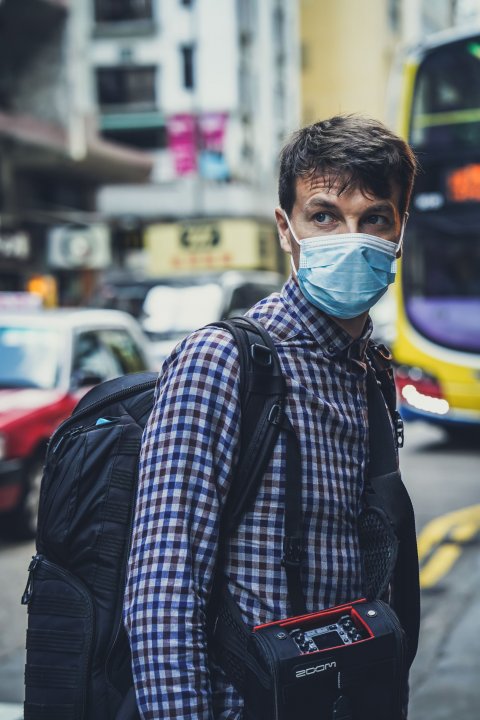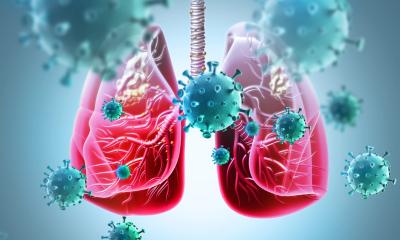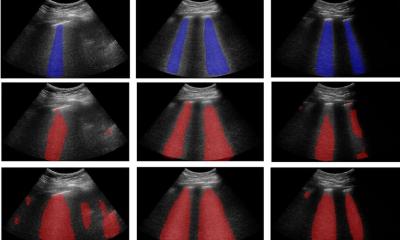News • Coronavirus research
COVID-19 severity and air pollution: exploring the connection
Scientists at the University of Cambridge have found an association between living in an area of England with high levels of air pollution and the severity of COVID-19, the disease caused by the SARS-CoV-2 virus.
Image source: Unsplash/Kristen Morith
Because of the urgent need to share information relating to the pandemic, the researchers have published their report on MedRXiv.
It has not yet been peer-reviewed. However, the preliminary data is supported by data in other countries. While the initial symptoms of COVID-19 include fever but do not always include breathing difficulties, some patients go on to develop very serious respiratory problems. Although most patients only experience mild illness, around a quarter of hospital-admitted cases require intensive care treatment because of viral pneumonia with respiratory complications. While research suggests that COVID-19 likely stems from an overactive immune response, it is not clear why some patients are at greater risk of severe disease.

Image source: Unsplash/Free To Use Sounds
Previous studies suggested that individuals over the age of 60 or with underlying health conditions, including cardiovascular disease, diabetes, chronic respiratory disease and cancer, are at highest risk of severe disease or death. Long-term exposure to air pollutants, including nitrogen oxides and ground level ozone from car exhaust fumes or burning fossil fuels, is a known risk factor for these health conditions. Such pollutants can also cause a persistent inflammatory response and increase the risk of infection by viruses that target the respiratory tract.
In this new study, researchers at the MRC Toxicology Unit at the University of Cambridge report an association between certain air pollutants and COVID-19 in England. The team analysed the data on total COVID-19 cases and deaths, against the levels of three major air pollutants, collected between the years 2018 and 2019, when no COVID-19 case was reported. Their study used publicly available data from seven regions in England, where a minimum of 2,000 SARS-CoV-2 infections and 200 deaths are reported in the period from February to the 8 April 2020.
The largest number of COVID-19 deaths in England occurred across London and the Midlands, reflecting the geographical distribution of COVID-19 related cases. Previous studies have shown that the annual average of nitrogen dioxide concentrations are largest in these two regions. When the team compared the annual average of daily nitrogen oxide and nitrogen dioxide levels to the total number of COVID-19 cases in each region, they found these to be positively correlated – in other words, the higher the pollutant levels, the greater the number of COVID-19 cases and deaths. Both nitrogen oxide and nitrogen dioxide result from a chemical reaction between nitrogen and oxygen during combustion of fossil fuels, and therefore represent a significant source of air pollution in areas with high traffic.
This highlights the importance of reducing air pollution for the protection of human health, both in relation to the COVID-19 pandemic and beyond
Miguel Martins
Marco Travaglio, a PhD student at the MRC Toxicology Unit, said: “Our results provide the first evidence that SARS-CoV-2 case fatality is associated with increased nitrogen oxide and nitrogen dioxide levels in England. London, the Midlands and the North West show the largest concentration of these air pollutants, with Southern regions displaying the lowest levels in the country, and the number of COVID-19 deaths follows a similar trend.” The team found a negative association between ambient ground levels of ozone and the number of COVID-19 cases and deaths in each region – in other words, reduced ozone levels are associated with a greater number of COVID-19 cases and deaths.
Ozone is a secondary by-product of traffic-related air pollution and is generated through sunlight-driven reactions between motor-vehicle emissions and volatile organic compounds. The lowest levels of ozone were found in highly urbanised regions, such London or the Midlands. This is likely to be due to the highly reactive nature of ozone, which results in the gas being converted to other chemicals, a phenomenon previously reported for areas of heavy traffic. The researchers suggest that the detrimental effects of low ozone concentration observed in this study could be linked to increased generation of ozone oxidation products.
Dr Miguel Martins, senior author on the study, added: “Our study adds to growing evidence from Northern Italy and the USA that high levels of air pollution are linked to deadlier cases of COVID-19. This is something we saw during the previous SARS outbreak back in 2003, where long-term exposure to air pollutants had a detrimental effect on the prognosis of SARS patients in China. This highlights the importance of reducing air pollution for the protection of human health, both in relation to the COVID-19 pandemic and beyond.”
The researchers say that their findings only show a correlation and that further research is needed to confirm that air pollution makes COVID-19 worse.
Source: © University of Cambridge (CC BY 4.0)
22.04.2020











